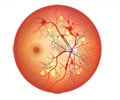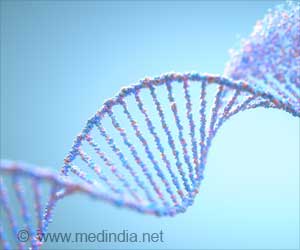Highlights
- A molecule called secretogranin III (Scg3) has been identified that regulates the formation of abnormal blood vessels in the eyes of diabetic lab animals, but not in healthy animals.
- Scg3 protein also increased the leakiness of retinal blood vessels in case of diabetes and another condition called retinopathy of prematurity that affects children .
- Using Scg3 inhibitors reduced the leakiness of the blood vessels and significantly inhibited the growth of new and abnormal retinal blood vessels.
Diabetic retinopathy causes dramatic loss of vision as the blood vessels supplying the retina become leaky and new, abnormal blood vessels are formed to replace them.
In children, the growth of abnormal blood vessels causes a condition called retinopathy or prematurity (ROP). This condition causes loss of vision in children and it affects around 16,000 premature infants per year in the US.
The growth of blood vessels and leakiness is regulated by a molecule called vascular endothelial growth factor (VEGF).
Two VEGF inhibitors, ranibizumab (Lucentis) and aflibercept (Eylea), have been approved to treat retinal vascular leakage, though they are only successful in about a third of patients. But these inhibitors are not approved for use in infants and children because VEGF is crucial for vascular development in newborn children.
The researchers including study lead-author Wei Li, Ph.D., research associate professor, and his colleagues at Bascom Palmer, developed a technique called "comparative ligandomics".
The approach allows compare the signaling molecules that selectively bind to the surface of retinal blood vessel cells in diabetic animals but not healthy animals.
"It is estimated that between one third and one half of all marketed drugs act by binding to cell surface signaling molecules or their receptors," says Li. "Our ligandomics approach can be applied to any type of cell or disease to efficiently identify signaling molecules with pathogenic roles and therapeutic potential."
Using comparative ligandomics, a protein called secretogranin III (Scg3), that efficiently binds to the surface of retinal blood vessel cells in diabetic, but not healthy mice was discovered.
Scg3 increased vascular leakage. In addition, when administered to diabetic mice, it stimulated blood vessel growth, but did not stimulate blood vessel growth in healthy animals.
VEGF, in contrast, stimulates blood vessel growth in both diabetic and healthy mice.
Researchers believe that Scg3 binds to a distinct cell surface receptor that is specifically up-regulated in diabetes.
When the diabetic mice were treated with Scg3-neutralizing antibodies, it dramatically reduced the leakiness of their retinal blood vessels and significantly inhibited the growth of new blood vessels in mice with oxygen-induced retinopathy, which is a well-established animal model of human ROP.
Researchers conclude that inhibiting this protein could be an effective treatment for both diabetic retinopathy and ROP, especially as it appears to have no role in normal vascular development.
"Scg3 inhibitors may offer advantages such as disease selectivity, high efficacy, and minimal side effects," Li says. "Because they target a distinct signaling pathway, anti-Scg3 therapies could be used in combination with, or as an alternative to, VEGF inhibitors."
The study, "Secretogranin III as a disease-associated ligand for antiangiogenic therapy of diabetic retinopathy," is published in The Journal of Experimental Medicine.
Reference
- Wei Li et al. Secretogranin III as a disease-associated ligand for antiangiogenic therapy of diabetic retinopathy The Journal of Experimental Medicine; (2017) doi/10.1084/jem.20161802
Source-Medindia















